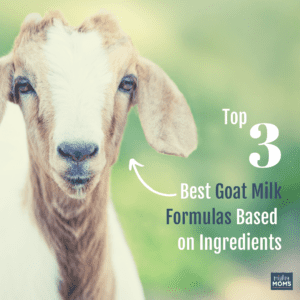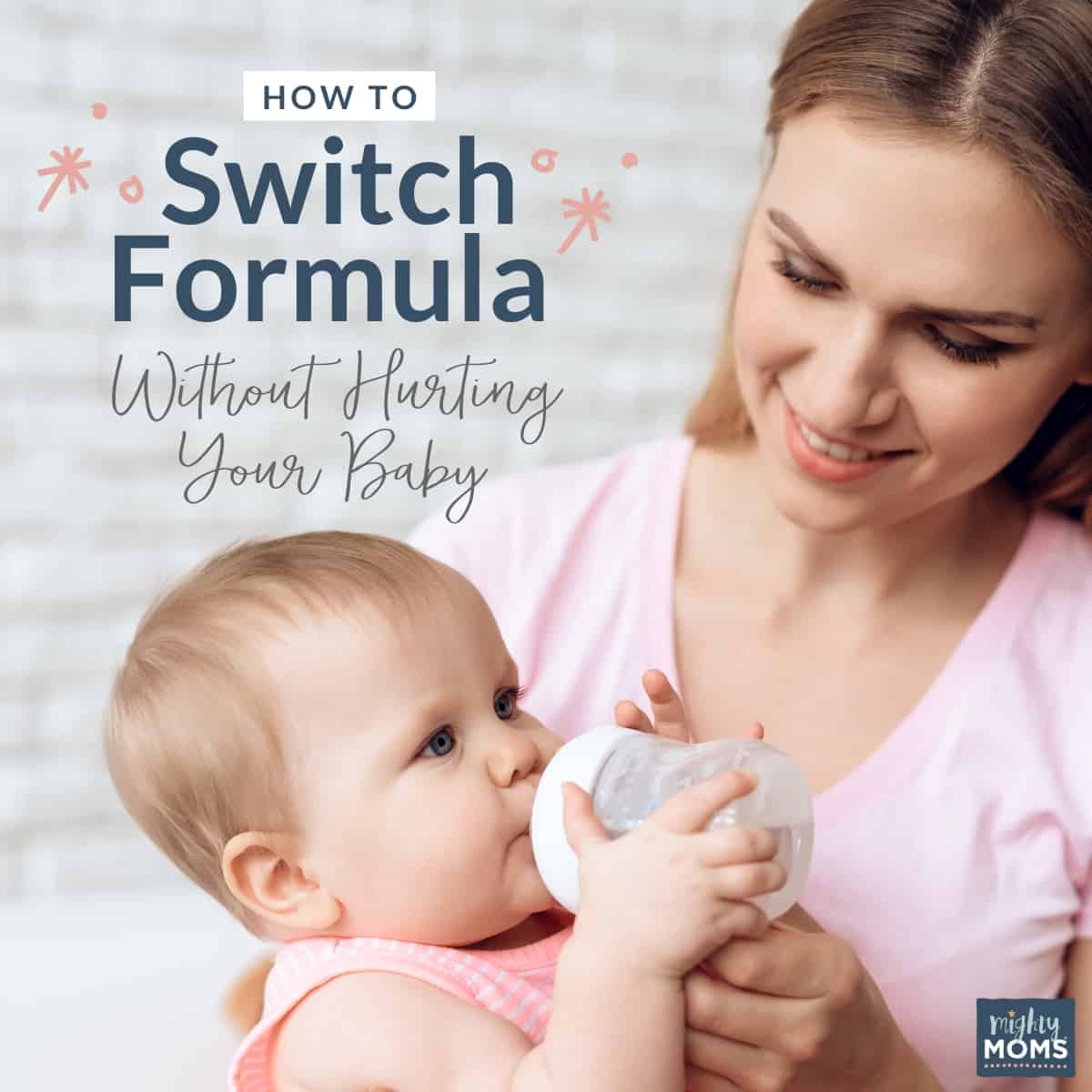This post is sponsored. This means we were asked to review or try something new, and then remunerated to share those thoughts. Since you are reading this post, it ALSO means that we enjoyed the experience. Friends don't let friends make false recommendations!
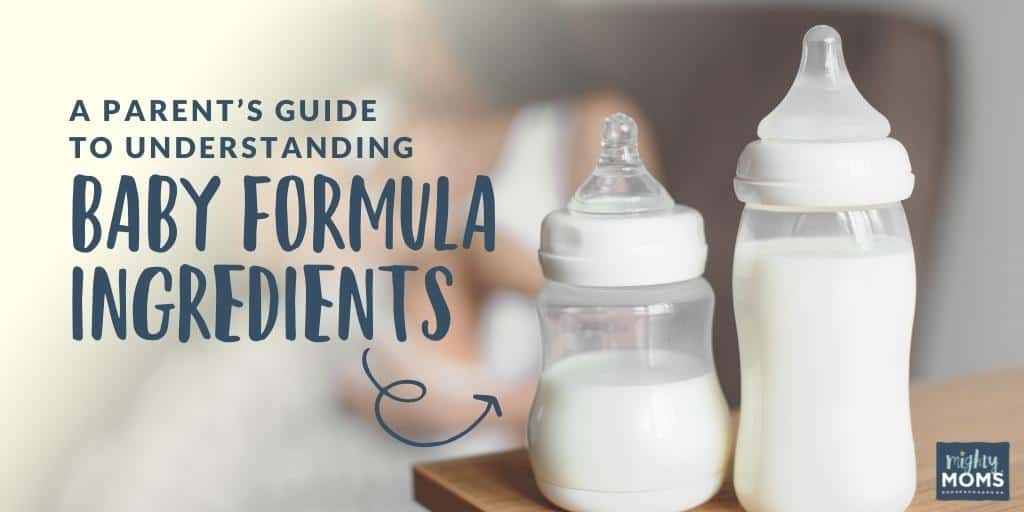
Every parent wants to make sure the things we are putting into our children’s tummies is the best possible combination of healthy nutrients to help them grow.
That’s what makes looking at baby formula ingredients so scary. It’s like reading an alien language. Most of us are completely clueless what Crypthecodinium cohnii oil is.
Is it helpful? Or a filler used to pad pockets in the Hamptons? (Spoiler: It’s actually a good source of brain-building omega-3 fatty acids.)
Today I thought it would be useful to all of you wonderful readers if I did some comprehensive research and study, breaking down all the facts you need to know about baby formula ingredients in a way that is easy to understand and (hopefully!) entertaining to read.
But first, let me disabuse you of a popular misconception about baby formula labels.
A Simple Baby Formula Label is Not Your Friend
One of the most common things I hear about baby formula ingredients is that it should be simple. That somehow, because of all those big-sounding words, that means the formula is chock-full of chemicals and other cancer-producing fillers that will destroy your baby’s tiny body. (MWAH HA HA!)
Let me remind you, however, of just how non-simple nature’s wonder-milk is. Yup. Breastmilk is incredibly complex. Check this out.
FDA Labeling Requirements vs. European Labeling Requirements
On top of that, the FDA requires very specific labeling in the US. European formulas can get away with listing “Vitamin B12” as a baby formula ingredient.
Part of the reason they are not allowed to be sold in the US directly is because the FDA wants to know exactly what type of B12 is in the formula. Is it methylcobalamin? Or cyanocobalamin?
Both of those sound a lot scarier than plain ‘ole Vitamin B12.
Pop Quiz: Guess the Product
Still not sure? Let’s take a little pop quiz. Here’s an approved FDA-label for a popular food.
Can you guess what the label is below? Hint: It’s all-natural, with no pesticides, GMO, or other gunk.
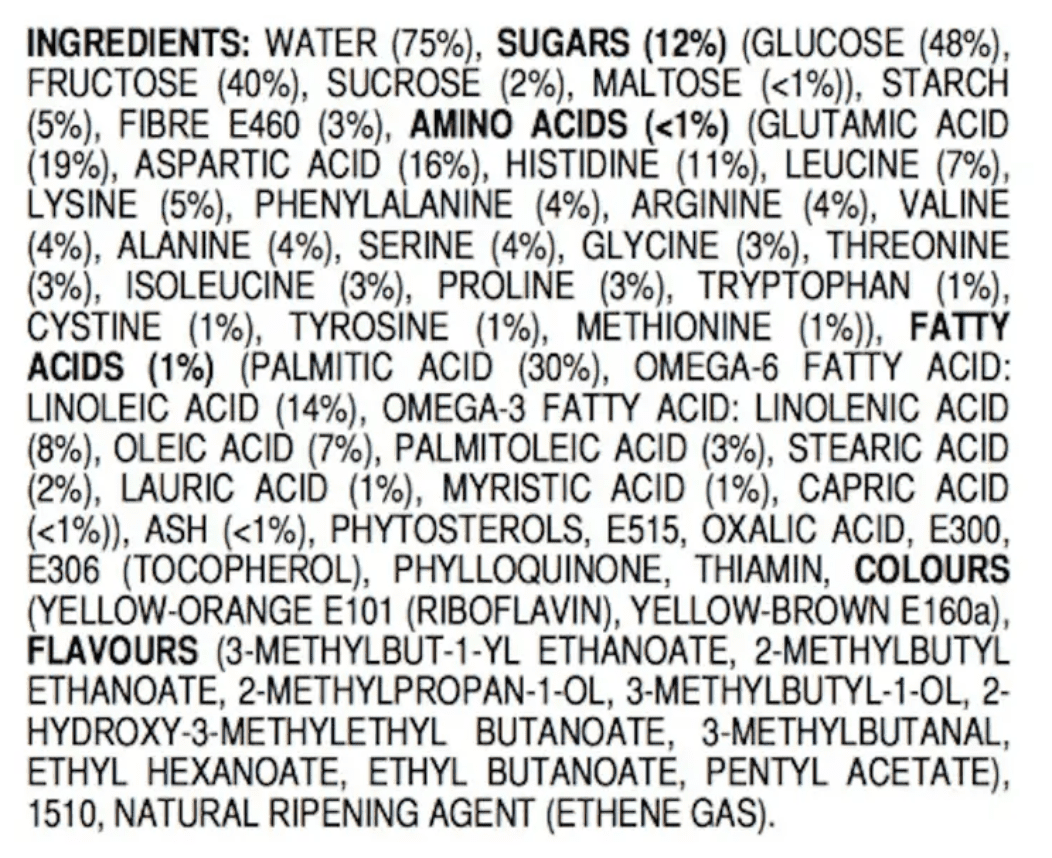
It’s a banana. Yep. Even an all-natural, body-loving, health-giving fruit has an FDA label that will give you nightmares. Is it no wonder, then, that the crazy complexities of baby formula ingredients would also look a little wonky to the non-chemist?
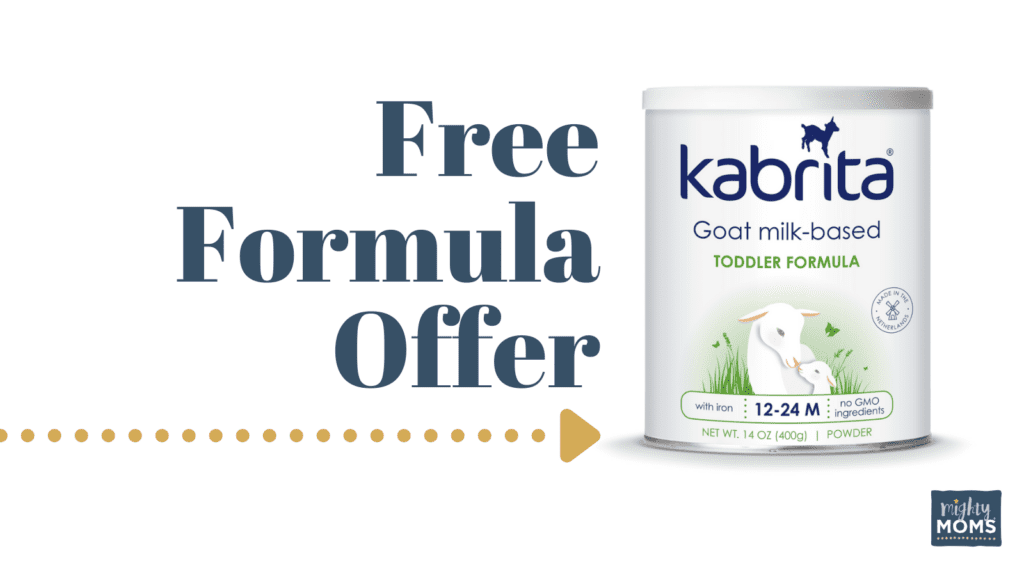
Baby Formula Ingredient #1:
Protein
Protein is absolutely essential for your baby to grow and develop. It is protein that makes sure your infant’s muscles, bones, teeth, and hair all develop properly. It is also essential in building up your baby’s immune system to fight off all those viruses (covid!) and other ickies that make them not feel well.
When it comes to breast milk and baby formula ingredients, that protein is split into whey and casein.
The Wonders of Whey Protein
Whey stays a liquid in your baby’s tummy, making it the easiest protein for your child to digest. Breast milk contains varying degrees of whey depending on how young your baby is.
- Breastmilk for newborns is 90% whey, 10% casein
- Mature milk shifts to a 60:40 ratio of whey and casein
- Late lactation shifts to 50:50
Because of this, baby formula manufacturers will add additional protein sources to try to get to those magic protein ratio numbers.
The Curious Power of Casein Protein
Casein protein reacts to the digestive enzymes in the stomach and curdles into a solid-ish form. If it is cow-milk casein, the curds can become quite dense like a baseball. This means your baby’s digestive system has to work a lot harder to break things down, sometimes creating constipation, gas, or reflux as a result.
Goat milk casein stays loose in the gut, like cottage cheese. It is one of the reasons babies who struggle with normal baby formula ingredients may thrive on formula based on goat milk protein.
There are different strains of casein in milk as well that can also contribute to digestive issues. Some studies have shown that A1 beta-casein can cause digestive discomfort. Kabrita Goat Milk Toddler Formula is largely A2 beta-casein (called A2 milk) which has been shown to have no negative digestive effects.
If you’re curious about learning more about the difference between A1 and A2 milk, this is a fantastic article to start with.
Baby Formula Ingredient #2:
Carbohydrates
The next superstar in baby formula ingredients are carbohydrates. These are the happy, good-for-you sugars that give your baby the energy he needs to crawl, explore, laugh and smile.
In the world of formula, lactose is usually the #1 ingredient in baby formula because it’s that important.
Let me tell you something very important: It is unlikely your baby has lactose intolerance, so be careful you don’t self-diagnose. Lactose intolerance is actually very rare for children under 2 or 3 years old.
In most situations, it’s not the lactose that young children struggle with, it’s the protein. (See the section above.) That’s why it’s so common for a baby to completely change after switching to a goat milk formula.
That said, if your doctor has diagnosed a lactose intolerance problem, none of the normal formulas from cows or goats are going to be a good choice. You’ll need to talk to them about moving to a hypo-hyperallergenic formula like one of these instead.
It’s worth repeating: goat milk is not a suitable replacement if your doctor has diagnosed your child with a cow’s milk protein allergy.

Baby Formula Ingredient #3:
Fat
Those chunky little fat rolls on baby’s legs aren’t just for kissing.
They are a good indicator of health! There are some nutrients (A, D, E, and K) that can only be absorbed through fat, making this macronutrient an essential baby formula ingredient to be at the table.
Fat is made up of different sized fatty acids that are linked together in various lengths. (Think bracelets, chokers, and necklaces.)
Breast milk is made up of a lot of different kinds of fatty acids. The challenge is, of course, how to recreate that breast milk profile using plant-based oils. And since no single plant-based oil has all those components, they have to find a good blend.
Here are the most popular oil blends used in baby formulas:
- Sunflower Oil
- High Oleic Sunflower Oil
- Coconut Oil
- Palm Kernel Oil
- Palm Olein
- Soybean Oil
- Palm Oil
A Tale of Two Oils: The Right Fatty-Acid Sandwich
When it comes to blending those oils, most formulas will create little oil “sandwiches” with two kinds of oil on the inside and one in the middle:
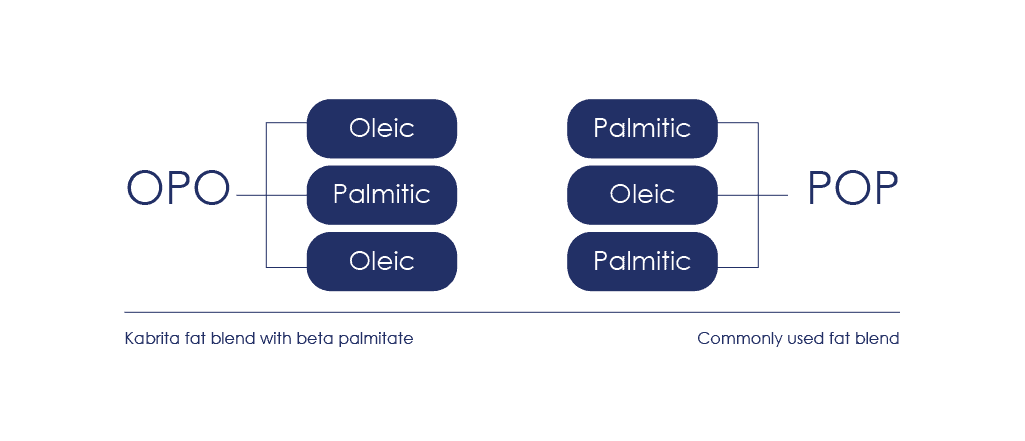
Why does Kabrita insist on rearranging the fatty acids in this different OPO arrangement?
Better Calcium Absorption, Softer Stools
Firstly, when Palmitic acid is on the outside, it fuses with calcium, creating a “calcium soap.” This means the calcium doesn’t get absorbed. Research shows that putting the Palmitic acid on the inside leads to a 15% increase in calcium absorption.
Those same calcium soaps can wreak havoc on your baby’s digestive system, making hard dense stools that are painful to pass. This study showed that stools can be softened up to 90% when the fat blend is OPO rather than the usual POP blend.
Happier Gut Flora, Less Colic and Gas
Fatty acids also help feed the good bacteria in the stomach, a vital component when you’re trying to build up your baby’s immune system.
In this study, scientists were able to prove that babies who are on breast milk or using a baby formula with beta palmitate showed higher amounts of healthy microflora when compared with babies on formula with the POP fat blend.
There is increased attention to a possible connection between colic, gas, fussy babies, and poor microflora in the gut. At least one study has shown that babies who use a beta palmitate fat blend like Kabrita have crying behavior that more closely mimics breastfed infants.
The Key To Understanding Baby Formula Ingredients
Here’s the good news: You don’t have to have a doctorate in chemistry to understand your baby’s formula ingredients.
- Remember that a complicated formula label doesn’t necessarily mean it’s not good for your baby.
- Understand the three main components of a healthy baby formula that your baby needs: Protein (whey/casein), Carbohydrates (lactose), and Fats (the beta palmitate OPO blend).
Of course, Kabrita’s goat milk formula makes it even easier to understand their label by breaking it down into components.
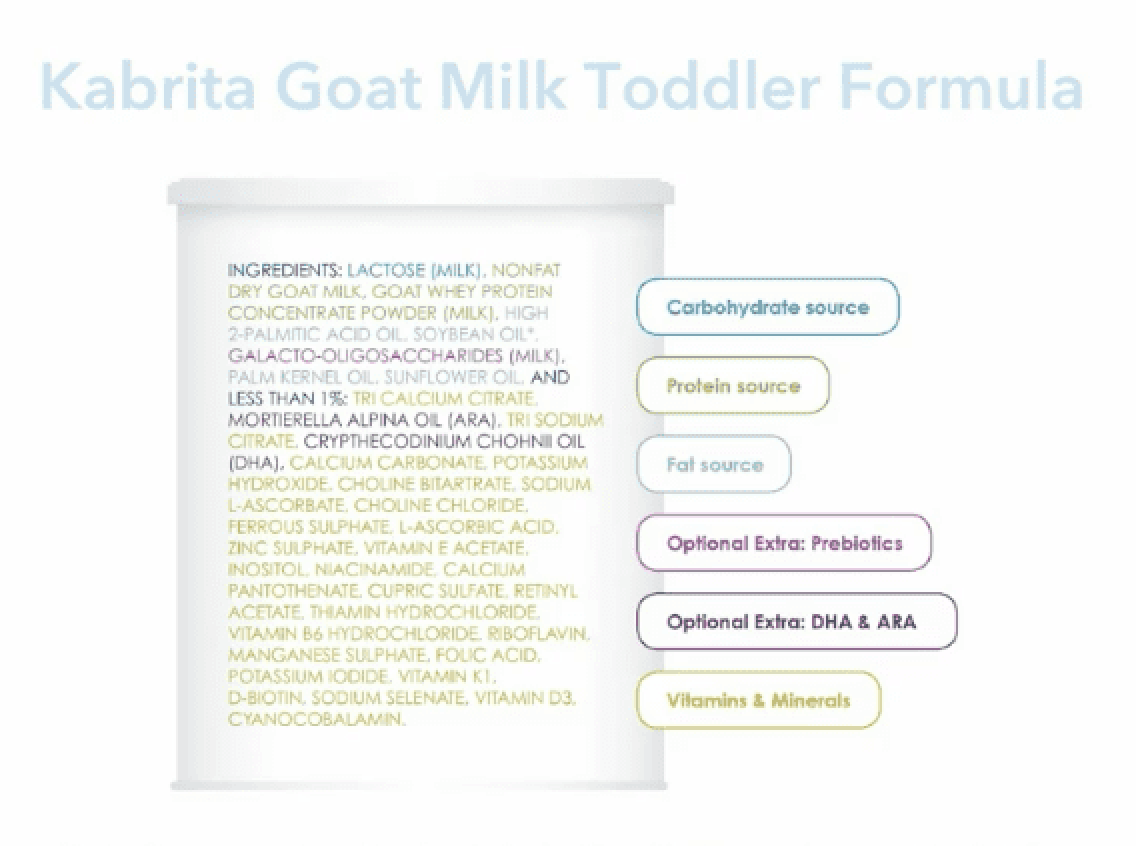
Try Kabrita’s Goat Milk Formula for FREE
There are a lot of reasons that I’ve recommended Kabrita’s goat milk formula over the past six years. (Yes, it’s been that long.)
Perhaps one of the best, though, is because they are so confident in their baby formula ingredients that they are willing to give my readers a free FULL-SIZED 14 oz goat milk formula tin to try.
Request a free 14oz formula here ($40 value) and pay just $6.99 for shipping. You will get…
- 1 full-sized 14 oz tin of Goat Milk Toddler Formula (That’s 22 4-oz servings for babies over 6 months who have started solids!)
- $14 worth of coupons
I’ve never heard of another baby formula company willing to give parents free baby formula. If you haven’t yet given goat milk formula a try, let me unabashedly beg you to request your free sample.
Your baby’s tummy will thank you!

We ♥ honesty! This post contains affiliate links that provide extra money for our mutual coffee habits addictions. Click here to learn more. As an Amazon Associate I earn from qualifying purchases.
Citations for Further Research
Omega 3 Fatty Acids and Covid-19: A Comprehensive Review. NIH.gov
Breast Milk Composition: What’s in Your Breast Milk? Medela.com
The Importance of Protein for Children’s Growth. SRNutrition.co.uk
What is Whey Protein? KabritaUSA.com
Re-Evaluation of the Whey Protein/Casein Ratio of Human Milk. NIH.gov
Review of Infant Feeding: Key Features of Breast Milk and Infant Formula. NIH.gov
Systematic Review of the Gastrointestinal Effects of A1 Compared with A2 Beta-Casein. Academic.Oup.com
Behind the Label: Our Fat Blend with Beta Palmitate. KabritaUSA.com
